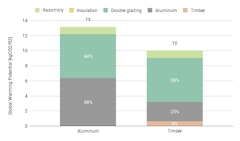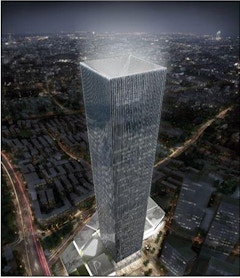
199 results
-
 Life cycle assessment was introduced in the 1970s as an analytical tool to quantify the environmental impact of a product, process, or service.…
Life cycle assessment was introduced in the 1970s as an analytical tool to quantify the environmental impact of a product, process, or service.… -

The Monash Woodside Building
- Paper by Alberto Sangiorgio · Andrew Cortese · Walter van der Linde
Today’s environmental challenges highlight the necessity of a holistic approach to façade design and construction, key to achieve the ambitious 2030
-

EUI of Building Clusters
- Paper by Srinivas M. Rao, AIA, AICP, LEED AP,
Large master planned developments such as Battery Park City in Manhattan, Mission Bay in San Francisco, and Playa Vista in Los Angeles were built… -
Edge Lighting Glazing with Hidden Fixtures
- Paper by Dave McCarroll · Dan Weinreber · Lei Fu
Dynamic architectural lighting in urban areas is a key element in creating attractive nighttime icons in addition to potentially generating
-

Event Passed
PowerSKIN Conference
The next PowerSKIN Conference will be held virtually in Munich on April 9th. The focus of the 2021 conference deals with the question of whether simplicity and robustness are in contradiction to good performance or whether they even complement each other: Simplicity vs. Performance?
Industry Event by TU Delft
-

Direct Sun and Occupant Comfort
- Paper by Madeline Gradillas, Henry Richardson,
Direct sun on the body is a known potential cause of thermal discomfort for occupants, yet most thermal comfort simulations do not capture its… -
DC Water Headquarters Case Study
- Paper by Sven Shockey · Leland Curtis · David Fersh
Facades must be responsive to a myriad of qualities and influences ranging from urban impact and aesthetic character to numerous performance
-

ETFE Membrane Envelope Strategies
- Paper by Audrey L Worden, ISSF · Kihong R. Ku, DDes · Alexander G. Worden, RA NCARB
Airflow within the cavity of double-skin facades is a key component of adaptive building envelopes which change thermophysical properties to meet
-
Paul Rudolph's Christian Science Building
- Paper by Scott Murray
This paper presents new historical research on the concrete facade of an important but relatively unknown and now demolished building by the American
-

-

The Myth of Simplicity
- Paper by Gerry Lang,
There were good why reasons early US Modernism first evolved in California– wide open sites with no constraints (physical or zoning), and effectively… -

Determining the Optimal Opening for Multi Skin Facade with External Ventilation
- Paper by Peter Simmonds
The envelope of the Harbin Bank Building in Beijing has a Multi-Skin Facade where the outer cavity is naturally ventilated. During the design the
-
Delivering Beauty
- Paper by Michael Mulhern
Amidst the critical conversations about the need to build better and more efficient building skins, designers are also mindful of the need for the
-

Performance of Compact, Closed Cavity, Double-skin Curtain Wall
- Paper by Julien Schwartz, M. Eng., Building Energy Consultant Katie Hay, P. Eng., Building Science Consultant Stéphane Hoffman, M. Arch., M. Eng, PE, Vice President, Building Science Analytics
A proposed design for a compact, closed cavity, double-skin curtain wall system in the Marine climate of the West Coast raises questions of potential… -
Adaptive Reuse of Industrial Heritage Façades
- Paper by Bahar Basarir, PhD, PhD from Research Assistant to Assistant Professor Hatice Yasemin Cakir, Research Assistant
With the developments in production, industrial facilities lost their function and were abandoned over time. The most frequent and often the most… -

Bringing an Icon Into the Future: Willis Tower
- Paper by Stephen Katz
Few buildings are as iconic as Willis Tower. Generations of Chicagoans have a collective memory of this building playing a role in their entire
-

Origami-Inspired Facade Design
- Paper by Joshua Schultz, Ph.D, P.E., LEED AP, ENV SP, Neil Katz, AIA,
To paraphrase Robert le Ricolias, the art of the structure is where to put the folds. Using that inspiration, fundamental concepts from origami,… -
Spandrel Thermal Simulation Techniques
- Paper by Ivan Lee, Building Science Consultant Edlyn Garcia La Torre, Facade Consulant Shahima Rahmatipour, Building Science Consultant
Glazed wall systems, such as curtain walls and window walls, are one of the most commonly used façade systems in modern buildings in North America.… -

Vertical Louvered Solar Control
- Paper by Clifton Fordham, RA, LEED AP,
Exterior shading devices, when typically used, are horizontal planes that are most effective at the south face of buildings in the northern… -

Embodied Carbon Of Timber Unitized Curtain Wall
- Paper by Isabelle Hens, LEED AP BD+C, WELL AP, EIT · Sophie Pennetier · Simon Schleicher
The building envelope is at the intersection of embodied and operational emissions. Curtain wall specifically could play an important role in


